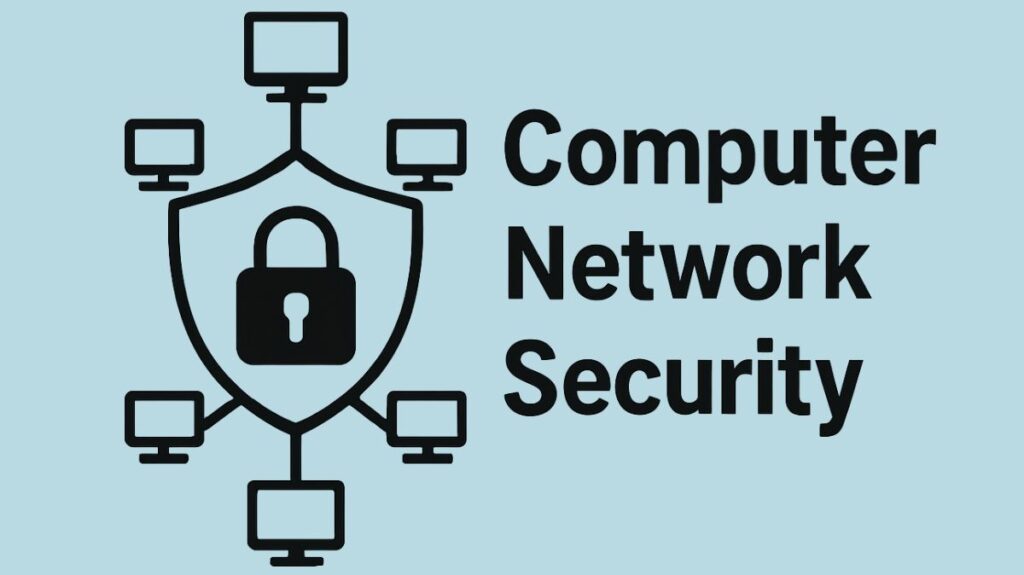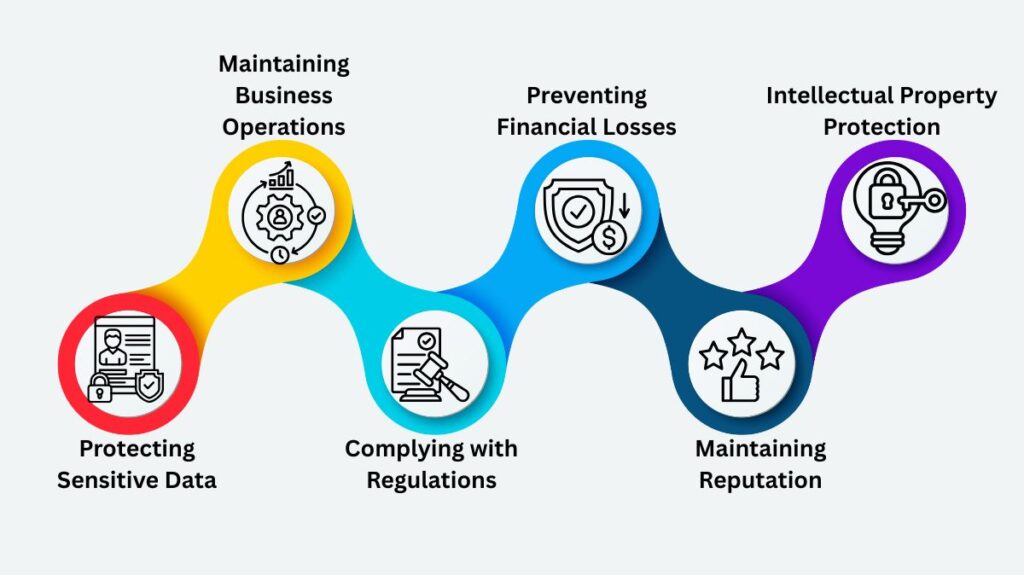Network Security Architecture and Design Principles, Importance of computer network security, Network Security Fundamental Goals, Network Security Threats, Network Security Challenges, Network Layers and Security, and Cisco Specific Security Solutions are all covered in this article.
Computer network security

The term “computer network security” describes the extensive procedures, safeguards, and technological advancements used to protect computer networks and their assets against unwanted access, abuse, alteration, disruption, and destruction. Given how much more people and businesses depend on computers and networks for everyday tasks, it is an essential component of contemporary networking. The major objective is to guarantee that data moving across the network is safe and secure, shielding private data from dangers like hackers.
Also Read About Types of Hubs, Features, Advantages And Disadvantages Of Hub
Network Security Architecture and Design Principles
Effective network security involves proactive design strategies:
- Hierarchical Model: The Cisco hierarchical model (Core, Distribution, Access layers) is a reference for designing scalable and reliable networks, and is used to implement security, with particular emphasis on protecting the Access Layer where users connect.
- Security Design Steps: Identifying assets, assessing risks, establishing security needs and policies, and putting technical solutions into action are all parts of a proactive security strategy.
- Controller-Based Networking (SDN): In contrast to conventional distributed configurations, centralizing network operations through a controller enables quicker and more reliable security updates via APIs.
Fundamental Goals of Network Security
The CIA trio is frequently used to recall the fundamental goals of network security:
- Confidentiality (Privacy): This refers to making sure that sensitive data is only viewed by systems or people with permission. This holds true for data that is at rest on storage media as well as data that is moving over the network. One of the main techniques for maintaining the secrecy of data is encryption.
- Integrity: This guards against corruption and unauthorized tampering by ensuring that only authorized people or systems make changes to data. A cryptographic value called a message integrity check (MIC) is employed to identify instances of manipulation.
- Availability: This guarantees that authorized users may access the network and its data when needed. Attacks known as denial-of-service (DoS) can significantly affect availability.
Also Read About How Data Flows Through The OSI Model And It’s Importance
Computer network security threats
Network security risks evolve. Common threats include:
Malware: Malicious software designed to disrupt computer operations, gain unauthorized access, or steal information. This category includes viruses, worms, Trojans, ransomware, and spyware.
Phishing: A social engineering attack where attackers send fraudulent messages to deceive individuals into revealing sensitive information or deploying malicious software. Email gateways are a common vector for these attacks.
Denial-of-Service (DoS) Attacks: These attacks flood a network or server with traffic to overwhelm it and make it unavailable to legitimate users. DDoS attacks use many compromised systems.
Man-in-the-Middle (MITM) Attacks: An attacker secretly intercepts and relays messages between two parties who believe they are communicating directly, allowing them to eavesdrop or alter communication.
Insider Threats: Security threats from current or former employees, contractors, or partners.
Reconnaissance Attacks: Unauthorized familiarization sessions where attackers map networks, resources, systems, and vulnerabilities.
Access Attacks: Attacks aimed at retrieving data, gaining access, or escalating access privileges.
Eavesdropping (Packet Sniffing/Network Snooping): Hackers “listen in” on network traffic, especially if data is sent in clear text.
Spoofing Attacks: Lying about the source address of a frame or packet, such as IP address spoofing or MAC spoofing.
Password Attacks: Methods like brute-force attacks (trying all combinations) and dictionary attacks (using word lists) to guess passwords.
Social Engineering: Tricking users into revealing sensitive information, often through fake login menus or malicious links.
Session Hijacking/Replaying: Copying and later replaying authenticated packets to disrupt services.
Smurfing: Sending large amounts of ICMP echo (ping) traffic to IP broadcast addresses, making a valid host appear as the source of the attack.
Unauthorized Access: Breaking into systems without permission.
Also Read About Network Topology Types: Bus, Star, Mesh And More Topologies
Importance of computer network security

Network security is crucial for several reasons:
- Protecting Sensitive Data: It prevents the loss or theft of confidential and personally identifiable information (PII), which can lead to identity theft, financial losses, and reputational damage.
- Maintaining Business Operations: It ensures that networks are available and reliable for business operations, preventing disruptions caused by viruses, malware, and cyberattacks.
- Complying with Regulations: Many governments and industries have strict data security regulations (e.g., HIPAA, GDPR) that organizations must comply with to avoid fines, bans, and legal issues.
- Preventing Financial Losses: It protects against significant financial losses that may result from data breaches, cyberattacks, and the theft of intellectual property.
- Maintaining Reputation: Preventing security incidents helps protect an organization’s reputation and trust with clients and partners.
- Intellectual Property Protection: Safeguarding a company’s ideas, inventions, and products is essential for maintaining a competitive advantage.
Challenges of Network Security
Implementing and maintaining effective network security presents several challenges:
- Evolving Attack Methods: Cyberattacks and threat actors constantly evolve their methods as technology changes, requiring security strategies to adapt continuously.
- User Adherence: It can be difficult to ensure that all network users consistently adhere to security best practices and keep up with evolving strategies.
- Remote and Mobile Access: The rise of remote work and bring-your-own-device (BYOD) policies leads to more distributed and complex networks, making wireless and mobile device security increasingly critical as users often access company networks from personal or public networks.
- Third-Party Partners: Cloud providers, managed security services, and vendors often gain access to an organization’s network, potentially introducing new vulnerabilities.
Network Layers and Security
Networks are structured in layers, as represented by the Open Systems Interconnection (OSI) model. Data passes through these layers, and different cyber threats target different layers. Therefore, for a network to be considered secure, every layer in the stack must be secured, not just the ‘network’ layer itself. The term “network security” broadly refers to securing the entire corporate infrastructure.
Cisco Specific Security Solutions
- Cisco AMP for Endpoints: An endpoint security solution.
- Cisco Firepower: Cisco’s Next Generation Firewall (NGFW) and Next Generation IPS (NGIPS) products.
- Cisco Identity Services Engine (ISE): Provides AAA (authentication, authorization, and accounting) services and contextual access control.
- Cisco Security Manager (CSM): An enterprise tool for centralized management of security policies.
- Cisco Talos Intelligence Group: Performs ongoing security research to provide up-to-date threat data to Cisco security products.
- Cisco AnyConnect Secure Mobility Client: Provides SSL encryption for VPN tunnels.
Also Read About What Is A CISCO Company? Check Cisco Certification Levels
